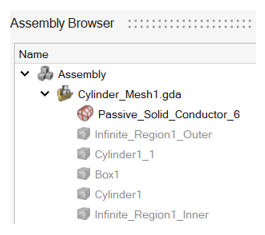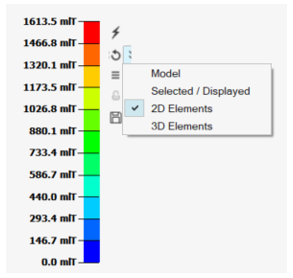Conductor described by Surface Impedance
Principle and interest
The surface impedance condition is a particular boundary condition, which takes into account the conducting bodies solely by their boundaries, in the case when the skin effect is pronounced.The surface impedance condition is very economical and provides reliable results.
The surface impedance condition imposes a relation between the electric field and the magnetic field at the surface of the conductor. More precisely, it considers only the tangential magnetic and electric fields on the conductor surface.
The body inner part is not considered by the solver. Therefore, it is not necessary to mesh it.
Access
The solid conductor described by surface impedance is available in 3D AC Magnetic solution:- Circuit / Conductor component:
In Eddy currents and Skin Effect, select Eddy currents with strong skin effect described by surface impedance
- Circuit / N-pins conductor component:
In Eddy currents and Skin Effect, select Eddy currents with strong skin effect described by surface impedance
- LBC / Passive Conductor :
- Check Strong skin effect described by surface impedance
Validity and limitations
There are two limitations:
- The skin depth δ must be very small with respect to the conductor dimensions. We
can consider that δ must respect:
δ < L/5 or δ < R/5
with:
L: conductor length or widthR: Conductor curvature radius
- The field must be mainly tangent to the conductor surface (negligible normal components at the surface).
Results
At the end of solving, a shell body associated to each conductor described by surface impedance is automatically created and added to the model to allow the post processing on it.
- Display the shell body and hide the solid bodies in contact with it

- Select the following option:

- The magnetic flux density B
- The current density J and Joule losses surface density dLossS
From the Result Request, the total Joule losses on the conductor described by surface impedance is computed and available through the EM responses or the Plot if there is a Motion.